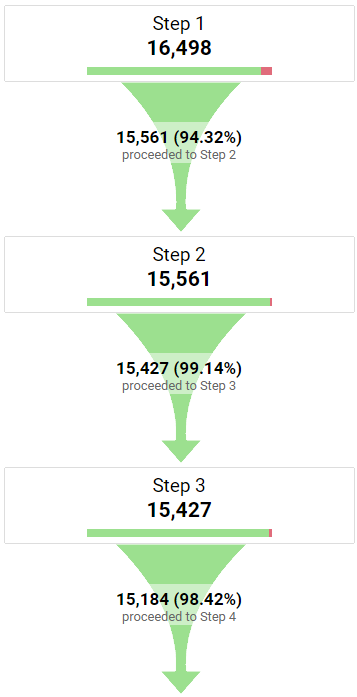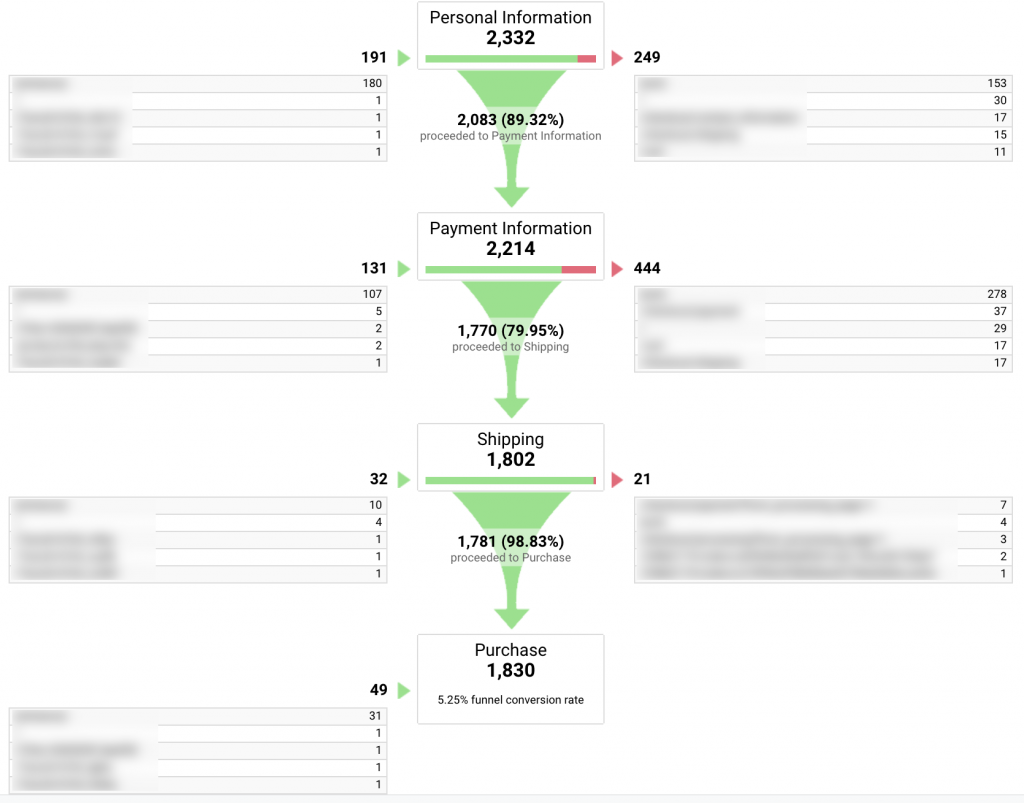Debunking Google Analytics Limitations: Discover What Data Goals Can not Track
In the realm of digital analytics, Google Analytics stands as an effective device that supplies important insights right into internet site efficiency and user behavior. However, among its capacities, there exist restrictions that commonly go unnoticed. Recognizing what Google Analytics can not track is critical for a thorough understanding of data analysis and decision-making procedures. From the complexities of user communication with vibrant web content to the intricacies of cross-device user trips, these constraints clarified areas that may stay obscured from typical analytics point of views. By unraveling these restraints, a clearer image emerges, permitting more enlightened techniques and improved insights right into user involvement and conversions.

User Communication With Dynamic Web Content
Individual communication with dynamic material plays an important duty in understanding customer behavior on web sites and optimizing the general customer experience. Dynamic content describes components on a website that can transform without the need for a complete web page reload. This includes interactive aspects such as pop-ups, sliders, forms, and videos that respond to individual activities in real-time. By tracking customer communications with dynamic content, site owners can obtain beneficial insights into user engagement, preferences, and habits.
Google Analytics offers numerous tools to track individual interactions with dynamic material, such as occasion tracking and digital pageviews. Occasion monitoring allows you to monitor particular customer activities, like clicking a button or enjoying a video, supplying data on just how customers interact with vibrant aspects. Digital pageviews can be used to track communications that do not bring about a brand-new page tons, offering a detailed view of customer engagement with vibrant material. By examining this data, web site owners can make enlightened decisions to boost user experience and drive conversions.
Cross-Device Individual Journeys
Just how can modern analytics devices track the complex courses users take across numerous tools in their on the internet journeys? Cross-device user journeys provide a considerable challenge for tracking and analyzing customer habits precisely. As users interact with applications or web sites using various tools such as smartphones, desktops, and tablets, it becomes important to comprehend exactly how they relocate in between these platforms to maximize customer experience successfully.
Google Analytics deals with constraints in tracking cross-device user journeys due to personal privacy worries and technological constraints - what data is google analytics goals unable to track. While it can offer insights right into individual tools' interactions, tracking a smooth individual journey throughout numerous devices stays a challenge. This constraint can lead to incomplete data and fragmented user insights, making it difficult for organizations to produce a unified sight of the consumer trip
To address this issue, organizations can utilize sophisticated analytics devices that use cross-device monitoring capacities, enabling them to acquire an extra holistic understanding of individual behavior. By leveraging these devices, organizations can connect the gap in tracking cross-device customer journeys and optimize their electronic strategies for a smooth customer experience.
Offline Conversions and Attribution
As organizations navigate the obstacles of tracking cross-device customer trips, one more critical aspect to consider is the realm of offline conversions and acknowledgment in the realm of information analytics. While Google Analytics gives valuable understandings into on the internet individual habits, it falls short when it involves tracking conversions that take place offline. This constraint presents a significant difficulty for companies that have both online and offline sales networks.
Offline conversions, such as purchases made in physical stores or with phone call facilities, are vital to understanding the total consumer trip. Without the capacity to attribute these offline conversions to particular online interactions, services may battle to precisely measure the effect of their digital marketing efforts.
To resolve this void, companies can discover alternate remedies such as integrating CRM systems with on the internet analytics devices or utilizing unique coupon codes that can be traced back to online projects. By bridging the gap between online and offline information, companies can obtain a much more detailed understanding of their consumers' habits and boost their general advertising and marketing approaches.
Person Customer Identification
In the realm of information analytics, the capacity to accurately recognize specific users throughout different on the internet touchpoints is a vital obstacle for Visit Website services seeking to individualize and optimize their advertising techniques. While Google Analytics gives valuable understandings right into customer behavior and communications, it drops brief in making it possible for the recognition of details people as a result of personal privacy concerns and technological restrictions. Google Analytics utilizes distinct identifiers such as cookies to track customer sessions and actions, but these do not equate to determining private users in a personal feeling.

Information From Secure Pages
Despite the increasing occurrence of safe and secure web pages on sites, getting data from these encrypted resources provides an one-of-a-kind challenge for electronic analytics systems like Google Analytics. Safeguard web pages, suggested by HTTPS in the URL, secure information traded in between the customer's web browser and the site's server to make sure privacy and safety. While this file encryption is essential for shielding sensitive details, it likewise positions constraints for tracking individual behavior and event analytics information.
Google Analytics deals with barriers in gathering detailed details from protected pages because of the file encryption procedures in location. Consequently, certain information points such as referral sources, keyword searches, and even some customer communications might not be fully captured when customers access a site with a safe and secure connection. This limitation can influence the accuracy and efficiency of the information analysis, leading to spaces in recognizing user behavior and choices on secure pages.
To navigate this obstacle, electronic experts may need to check out alternative tracking methods or utilize other tools specifically created to collect insights from safe web pages. By adjusting strategies to accommodate these limitations, businesses can still derive important analytics despite the restrictions provided by encrypted connections.
Verdict
In conclusion, Google Analytics has constraints in tracking user communication with vibrant content, cross-device customer Read More Here journeys, offline conversions, private customer identification, and information from safe and secure web pages. These limitations hinder a detailed understanding of customer habits and may result in gaps in data evaluation. Regardless of its important understandings, Google Analytics may not supply a complete image of individual involvement across different touchpoints. It is vital for services to be aware of these restrictions and think about additional devices for a much more holistic view of their information.
User communication with dynamic web content plays a critical role in comprehending user habits on internet sites and maximizing the total individual experience. By tracking customer communications with vibrant web content, site owners can gain valuable insights right into user engagement, choices, and habits.
Google Analytics makes use of unique identifiers such as cookies to track individual sessions and behavior, but these do not equate to identifying individual customers in an individual feeling.
As an outcome, certain information points such as reference sources, keyword searches, and even some user communications may not be totally captured when individuals access an internet site through a protected link.In verdict, Google Analytics has constraints in tracking customer interaction with vibrant web content, cross-device individual trips, offline conversions, private user recognition, and data from safe pages.
Comments on “What Data Is Google Analytics Goals Unable to Track and Why”